Annual Harvest, Seacliff
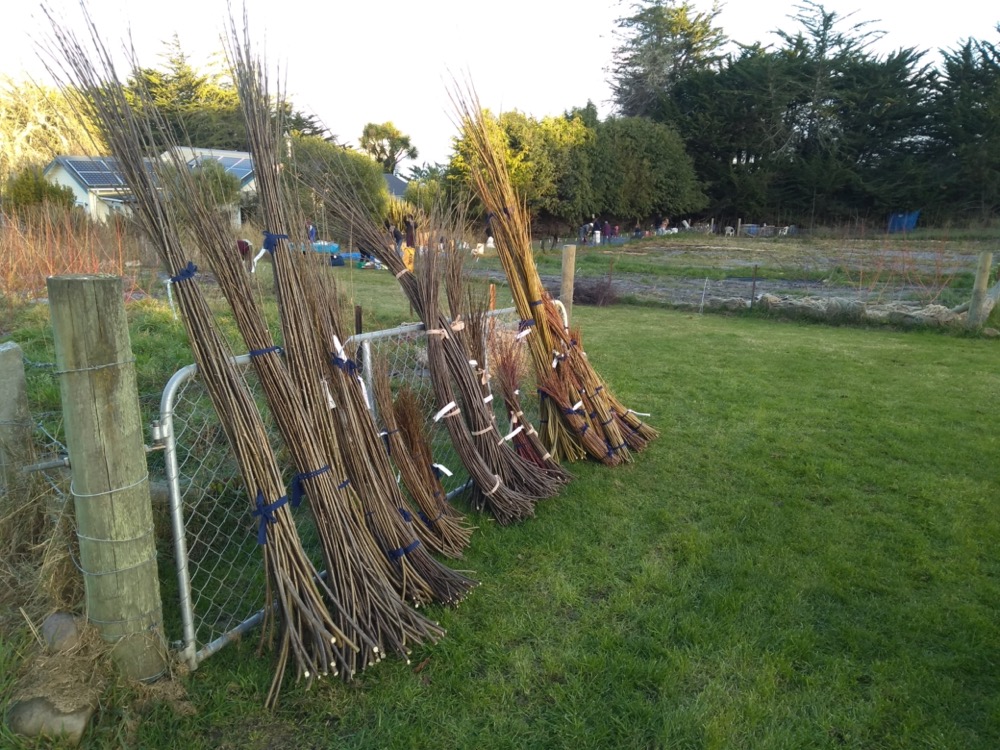
Nearly done! Willow graded and bundled ready to be taken to storage.
Bronwyn Lowe • July 10, 2022
We were really fortunate and had a perfect weather window for the inaugural Seacliff harvest. Lots of helpers, lovely sunshine and no wind added great spirit to the day. Fantastic team-work saw us harvest, sort, bundle and move to storage the majority of the willow in a single day. Big thanks to Amanda for providing us with a storage room just a short distance from the willow beds, to Margaret for making two big pots of soup for our lunch, and to everyone who came along and worked hard all day. It was very rewarding to harvest a fairly decent amount of usable willow from this first year of growth. All the care and hard work establishing the willow beds last spring was well worth it!
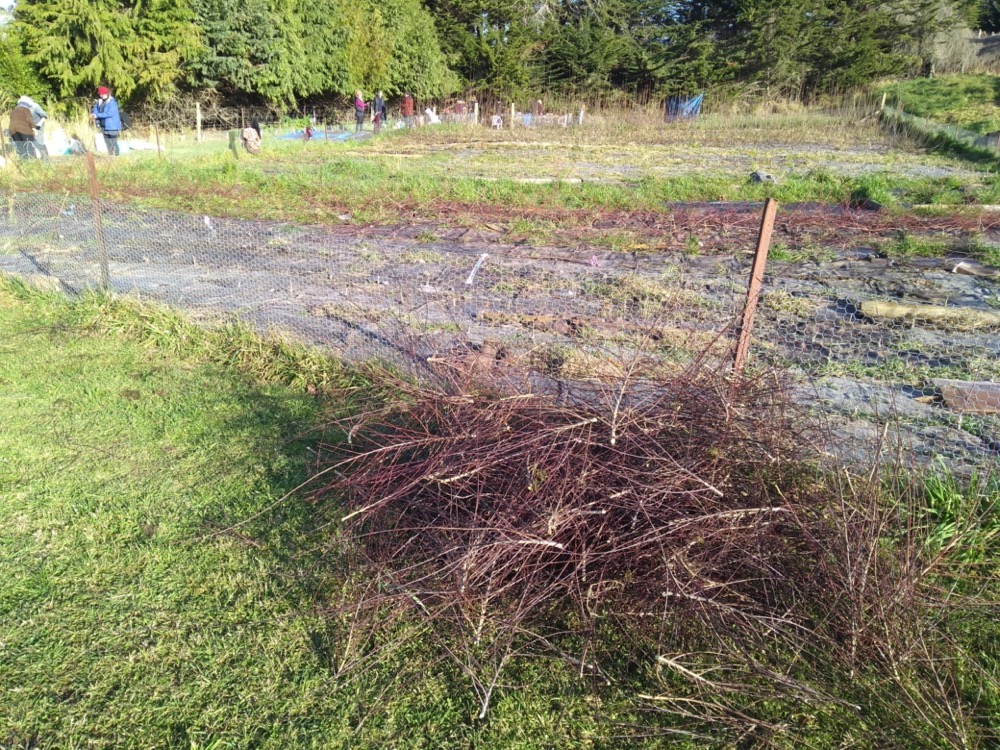
Harvested rods of one-year old Salix purpurea "Nana", all very short with dense branching.
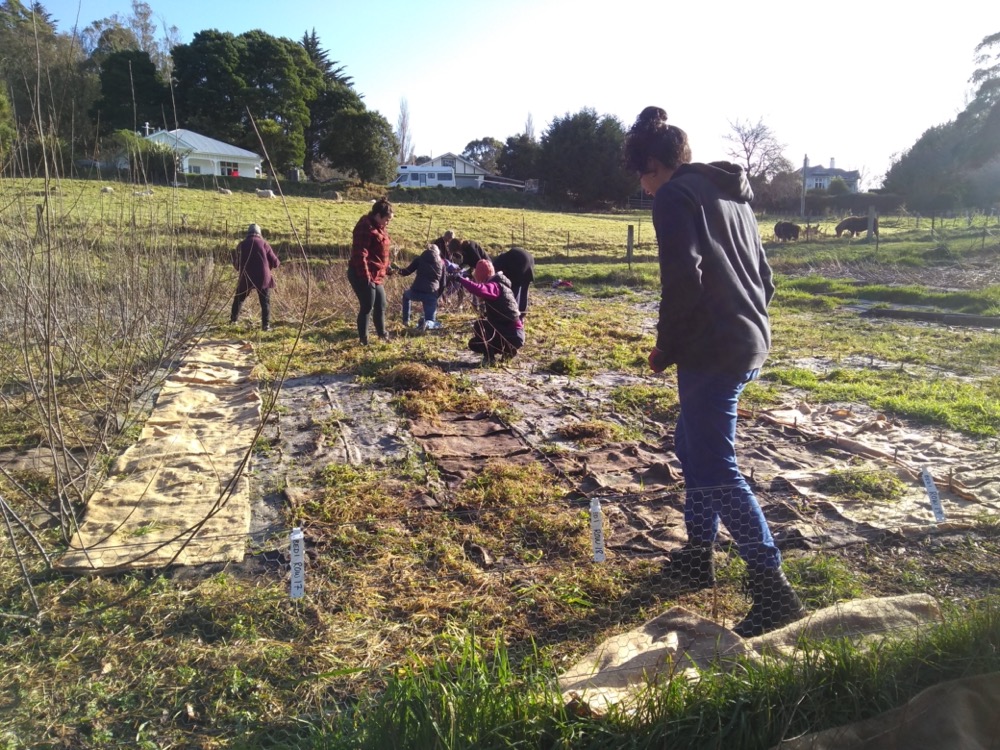
Making short work of the Salix purpurea "Green Dicks" section of the willow bed. The taller growing cultivar on the left is Salix triandra "Black Maul".
The willow that was unsuitable for basketmaking due to branching of the rods and small size has been cut into kindling size pieces, and is bagged up. Get in touch with us if you would like some kindling (you will need to store it for a while, needs to dry out before it will burn).
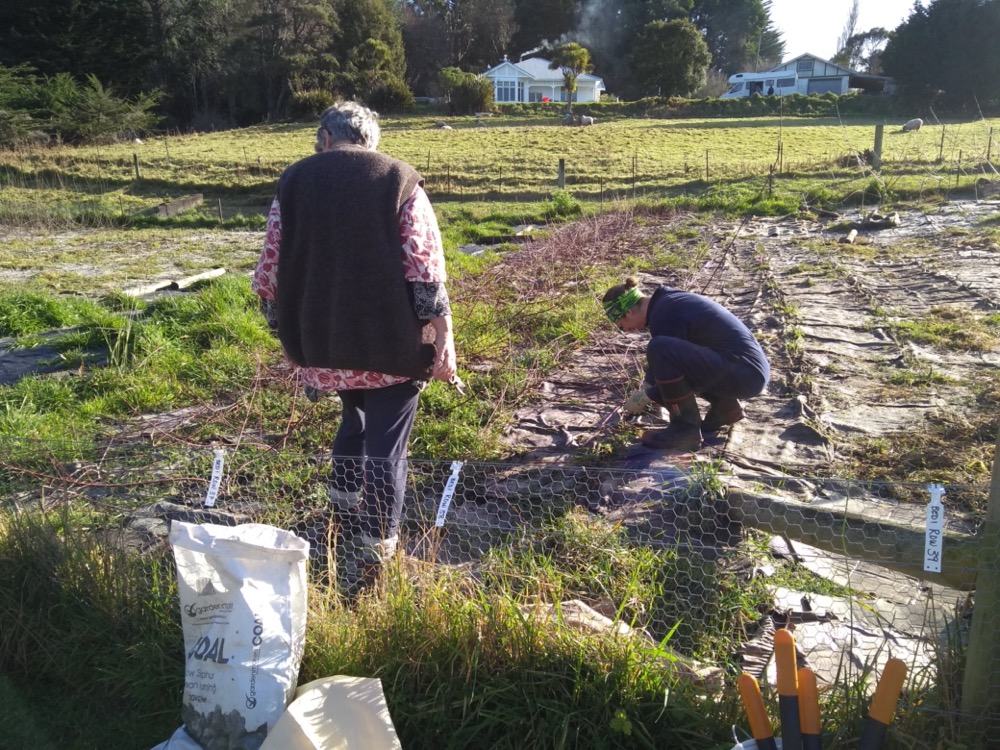
Harvesting Salix purpurea "Lancashire Dicks", Salix eriocephala "Americana" and Salix purpurea "Leistershire Dicks".
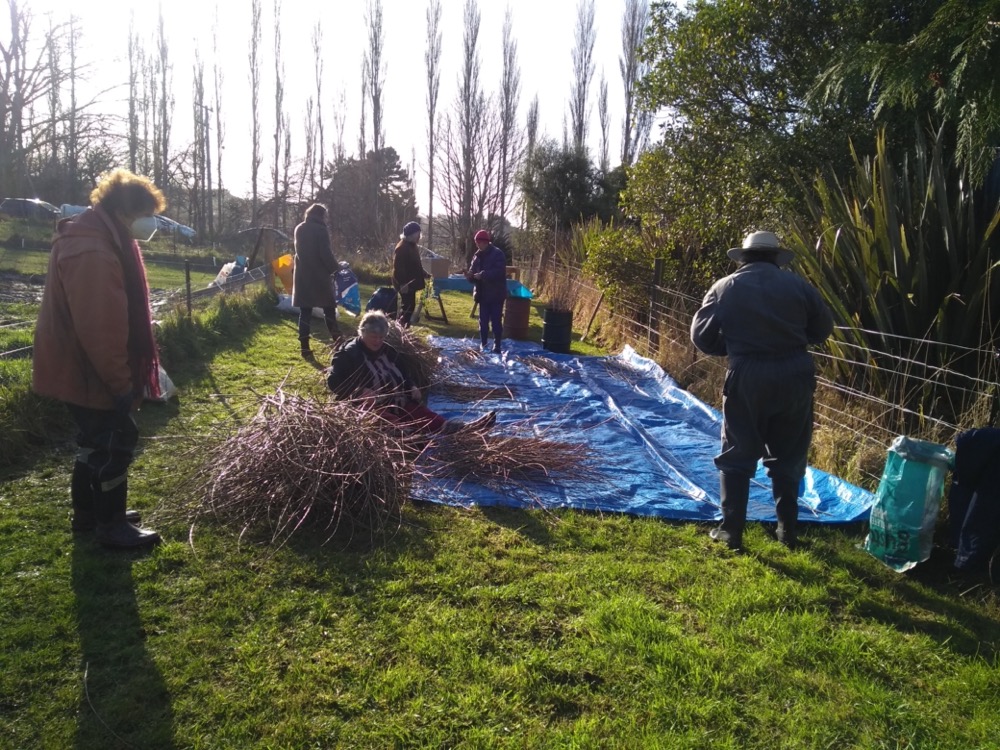
Sorting, grading and bundling Salix purpurea "Green Dicks"
A lot of the willow harvested this year had multiple branching on the rods. Unfortunately, the branched material is not very good for basketmaking. The rods tend to break at the branch point while weaving, and the branches leave a stub on the rod that is hard on the hands and eye. We were able to rescue some material but cutting off and keeping longer side branches that were not branched themselves. Branching is fairly typical in the first year of growth of a new willow bed, as there is very little competition for light between the young stools. New growth tends to branch and sprawl sideways to fill space rather than racing against neighbouring stools to reach up to the sky. Individual rods also tend to be shorter and thinner than is typical for mature stools. We’re expecting the willows to be producing rods typical of mature stools by their third year.
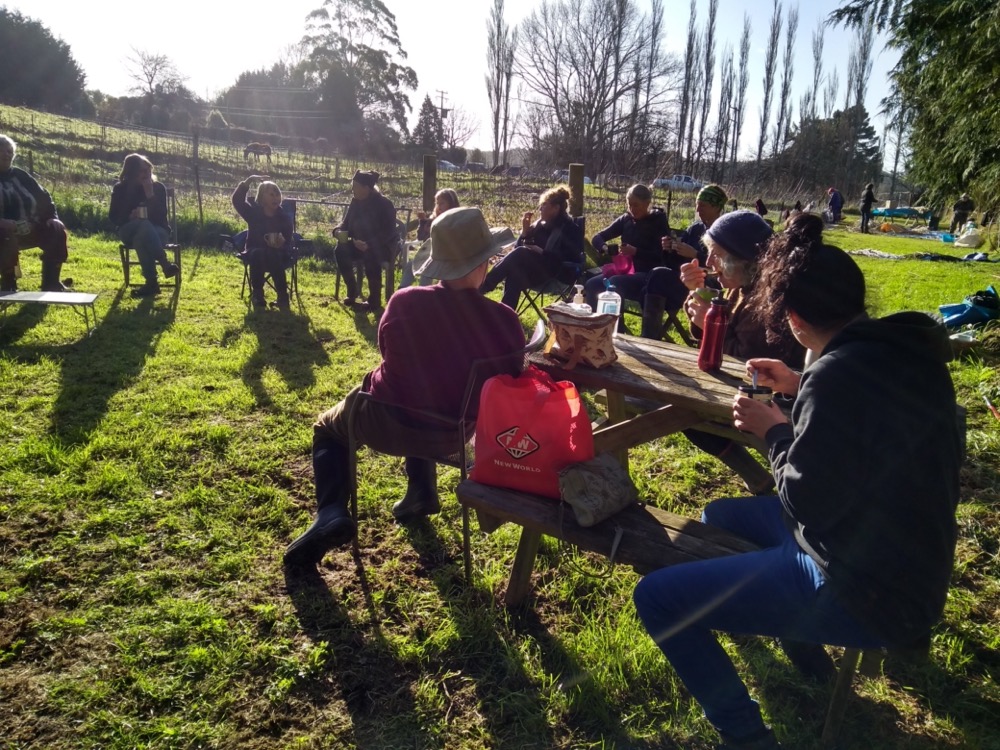
A well earned break for lunch. Hot soup and buns much appreciated by all!
The natural growth habit of willows varies from low growing shrubs to tall trees, depending on the species and variety. When coppiced in a willow bed, this growth habit controls the size of the rods produced. Our smallest variety is Salix purpurea "Nana", our largest is Salix viminalis "Mr Green", which can produce rods over 3 metres tall. Salix purpurea "Green Dicks" is a reliable basket making cultivar, producing rods good for small to medium sized baskets. We have planted multiple rows of this variety, to provide a good bulk of material every year for our members, as well as material for our workshops.
Salix purpurea "Lancashire Dicks", Salix eriocephala "Americana" and Salix purpurea "Leicestershire Dicks" all grow naturally as shrubs rather than trees. In this first year they have all tended to sprawl out sideways, filling space horizontally rather than growing up vertically. We expect taller, vertical rods on these stools as they mature over the next couple of years and produce a greater number of rods per stool. More rods per stool creates greater competition for light, and the rods grow straight and tall as they reach for the sun.
After cutting, the rods from each variety were carried to separate sorting areas. This year we sorted into branched and un-branched rods first. The branched rods are usually not good for weaving with, and were cut into short lengths for kindling and bagged. Un-branched rods were graded according to rod length and tied into bundles. Sorting drums make it easier to stand the rods on end and select out groups of rods of similar length (see Sorting for photos of this process)
We are working on raising funds to build a work and storage shed in the area we currently use for our picnics. We plan to build a shed that will give us a dry work space, somewhere to have lunch and cuppas out of the weather, and storage for the harvested willow.